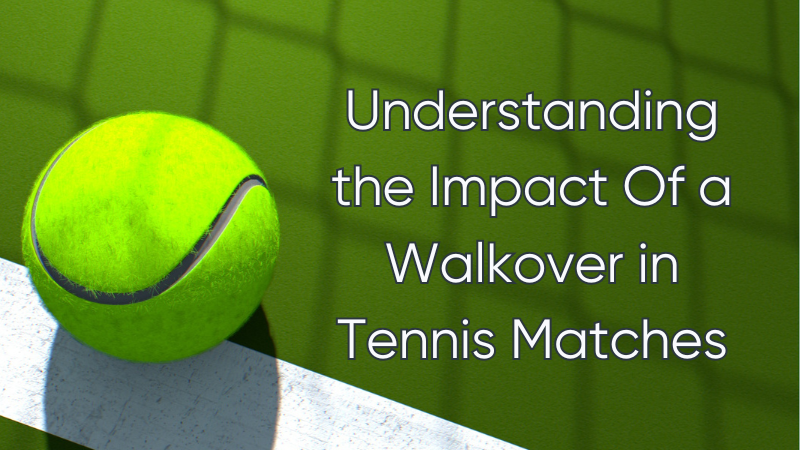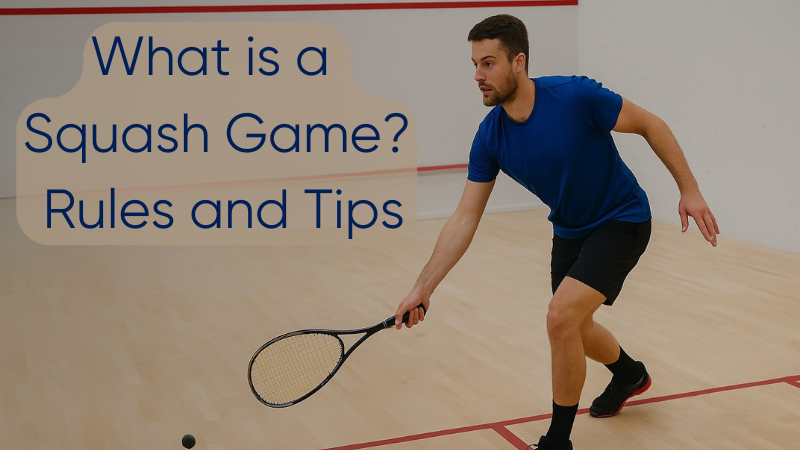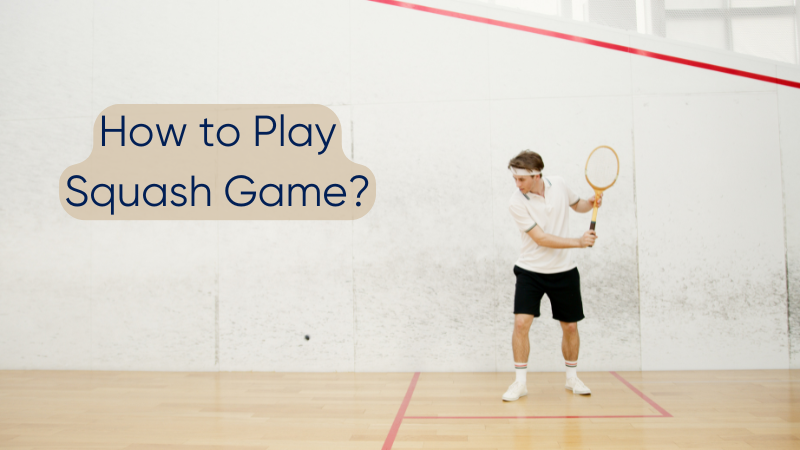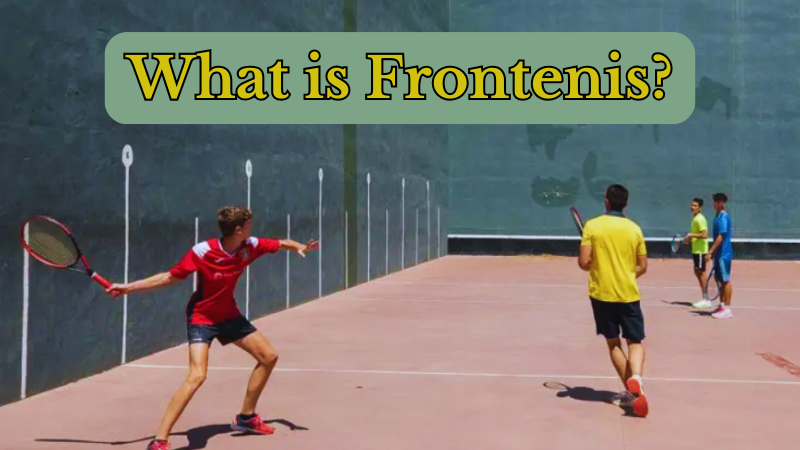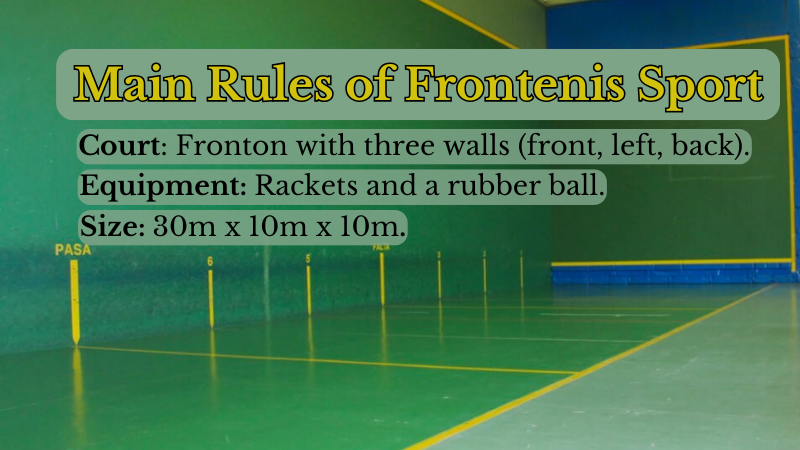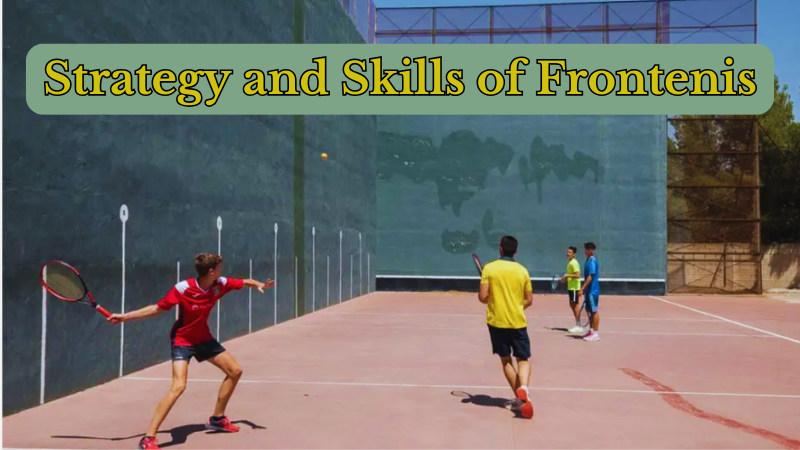Understanding the Impact Of a Walkover in Tennis Matches
Sometimes, fans can get confused by a walkover in tennis and don’t understand its full impact on the tennis.
This blog explains what a walkover means its impact on players, tournaments, and even betting.
Key Takeaways
- A walkover happens when a player wins without playing, usually due to the opponent’s inability to compete.
- A walkover counts as an official win, and the player who shows up automatically advances.
- Retirement is different: the match starts, but one player stops due to injury or other reasons.
- For tennis betting, a walkover usually counts as a win, but always check the betting rules.
What is a Walkover in Tennis?
With famous cases like Serena Williams advancing due to her opponent’s withdrawal at Wimbledon 2018, fans often search “what does walkover mean in tennis” or “tennis what is walkover” when such events occur during major tournaments.
After learning the basics of tennis matches, it is helpful to understand how a walkover affects the game. A walkover in tennis means a player moves on to the next round without hitting a ball because their opponent is unable to compete.

This situation can occur if a player becomes injured, falls ill, or faces personal issues before the match begins. The meaning of a tennis walkover differs from retirement in tennis; retirement occurs after play begins, whereas a walkover happens before any point is played.
In official records, tournaments count a walkover as an advantage for the remaining player but not as an actual win with match statistics. Walkover tennis rules state that no points are awarded for betting purposes, and most bookmakers avoid bets on these matches.
Impacts of a Walkover on Tennis Matches
A walkover can quickly change the mood and momentum of a tennis event. It affects both players and fans, making matches less predictable and sometimes disappointing.
Player Performance and Mental Preparation
A walkover in tennis can disrupt a player’s performance and mental preparation. Players spend time preparing physically and mentally, anticipating their opponent’s style.
When a walkover occurs, they feel frustrated and miss the chance to test their skills. Mental readiness is crucial for success, and skipping a match can lead to self-doubt.
While some players see a walkover as an opportunity for extra recovery, most prefer real matches to build momentum, especially in tournaments like Wimbledon or the US Open.
Tournament Scheduling and Audience Experience
Walkovers create challenges in tournament scheduling by disrupting match times and forcing organizers to adjust the schedule.
This often leads to delays and frustrates fans. Spectators expect thrilling matches, but sudden cancellations leave courts empty. To minimize walkovers, officials work on better communication with players about potential issues in advance.
Who Has Received the Most Walkovers?
Below, we share a list of the players who have received the most walkovers in tennis history.
| Player | Total Walkovers Received | Notable Events | Impact | Details |
|---|---|---|---|---|
| Roger Federer | 15 | Walkovers received in major tournaments like Wimbledon, the Australian Open, US Open | Gained valuable rest and advanced to later rounds | |
| Rafael Nadal | 13 | Walkovers in events like the US Open, French Open, and ATP Cup | Extra recovery time during the season | |
| Serena Williams | 12 | Walkovers at the US Open, Australian Open, and other Grand Slams | She benefited from rest, allowing her to recover between matches | |
| Novak Djokovic | 11 | Walkovers during various tournaments, including Wimbledon and the Australian Open | An advantageous rest period during a busy season |
Notable Walkovers in Tennis History
Walkovers in tennis always add an unexpected twist to the game. One memorable moment happened in 1996 when Pete Sampras got a win against Eric Taino, who had to pull out due to injury. Fans were stunned by the sudden change, which impacted the flow of the tournament.
Fast forward to 2004, when Maria Sharapova got a walkover from Anabel Medina Garrigues at the Australian Open, allowing her to advance without hitting a ball. It’s not all about losses — sometimes, walkovers give players a chance to rest and recover while still moving forward in a tournament.
More recently, in 2019, Rafael Nadal received a walkover at the ATP Cup when Nick Kyrgios withdrew due to illness. These walkovers might seem like an easy win, but they have a huge impact on a player’s preparation and mental game, not to mention the way they change the plans of their opponents and the audience’s expectations.
Tennis Walkover vs Withdrawal
A walkover in tennis happens when a player cannot compete, often due to injury or personal reasons. In this case, the opponent automatically wins the match without playing. This can impact tournament scheduling and affect the spectator experience.
On the other hand, a withdrawal is when a player decides to pull out of the tournament before their scheduled match. Typically, they inform officials in advance. Understanding the difference between these terms is important, especially when it comes to betting.
Differences Between Walkover, Retirement, Withdrawal, and Default in Tennis
In tennis, a walkover, retirement, withdrawal, and default each have different meanings and impact the match in their way.
| Term | When It Happens | What It Means | Impact | Example | Notable Example |
|---|---|---|---|---|---|
| Walkover | Before the match starts | The player cannot compete, and the opponent wins automatically | No match is played, and the opponent wins by default | Player is injured before the match begins | 1996: Pete Sampras received a walkover when Eric Taino withdrew due to injury. |
| Retirement | After the match starts | A player has to stop the match due to injury or illness | The match ends early, and the opponent wins | Player is injured or ill during the match | 2019: Rafael Nadal retired from his match at the Australian Open due to injury. |
| Withdrawal | Before the tournament starts | The player pulls out of the tournament completely | A lucky loser takes their place | Player becomes sick or unavailable before the tournament | 2008: Martina Hingis withdrew from Wimbledon due to injury, allowing a lucky loser to take her place. |
| Default | During the match | A player is disqualified for violating the rules | The opponent wins, and the player faces penalties | Player is disqualified for misconduct | 2020: Novak Djokovic defaulted at the US Open after accidentally hitting a ball that struck a line judge. |
What Happens to a Tennis Bet If a Player Retires?
If a player retires from a tennis match, what happens to your bet depends on the bookmaker’s rules. Most of the time, the bet is canceled or refunded if a player retires due to injury or illness.
However, if the player has already won a set or is close to winning, the bet may still be settled. It’s essential to review the betting rules of your bookmaker to understand how they handle retirements, as different platforms have varying policies.
Conclusions on Walkover in Tennis
Walkovers are an unexpected occurrence in tennis, affecting both players and fans. They happen when a player advances to the next round without playing, typically due to their opponent’s inability to compete, often because of injury or personal reasons.
While it may seem like an easy win for the player who shows up, a walkover can disrupt mental preparation and create uncertainty about their performance in future matches.
For fans, a walkover can be disappointing, as it affects the tournament schedule and the anticipation of the match. Additionally, understanding how walkovers impact betting is important, as different rules apply depending on the tournament or betting site.
FAQs About Walkover in Tennis
What is a walkover in tennis matches?
A walkover in tennis means one player wins because the other cannot play, often due to injury or withdrawal before the match starts.
Does a walkover count as a win in tennis?
Yes, if a player gets a walkover, it counts as an official win for ranking and record purposes.
How does a walkover affect tennis betting rules?
Most sportsbooks void bets on matches with a walkover since no ball was played; check specific tennis betting rules for details.
What happens to my bet if there is a walkover in tennis betting?
If your bet involves a match that ends in a walkover, most sites refund your stake unless stated otherwise by their betting rules.
What does retired mean in tennis betting compared to walkovers?
Retired means the match started, but one player stopped playing due to injury or another reason; it is different from a pre-match walkover, where no points are played.
